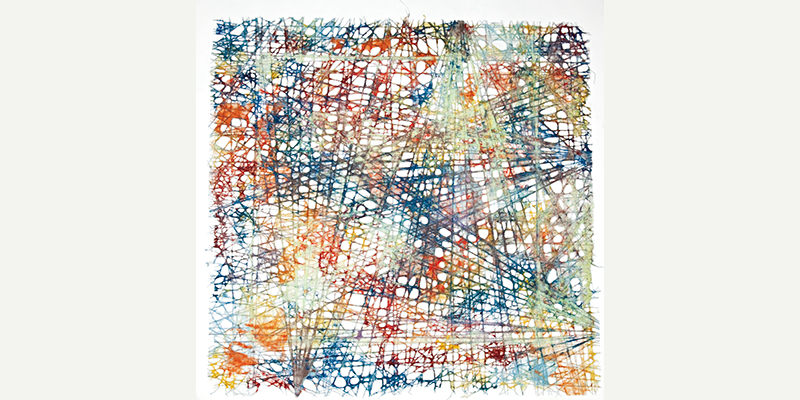
Yoko Okuyama
Biography
Yoko Okuyama was born in Tokyo. After graduating in Architecture at the prestigious Hokkaido University of Engineering. She started her career in KENZO TANGE’s studio, later founding SOSEISHA ARICHITECT OFFICE. She has been living in Verona, Italy since 2000. Captivated by the world of art and with her experience cultivated as an architect, she started to create her own works using WASHI (traditional Japanese paper). She has exhibited both in Italy and abroad.
Artist and Works
The artist’s works are created from traditional Japanese paper called washi, using an original technique which consists of dying KOZO (cellulose). As no brush strokes can be used with this method, the flow of water determines the form. Catching the moment and being at one with the water are of fundamental importance. KOZO is a rare material which can be manipulated to express both bold and delicate movements, even in the micro world. The artist creates not only two dimensional paintings and three dimensional works of art, her art is also present in the everyday objects, among which textiles and lamps, she designs and produces.
The review of Yoko Okuyama's works
Hers are lightweight pictures which welcome space, which divide absence, which breathe in an oriental way. The picture neither invades or takes over the space but spreads out delicately and maidenly. Colors is absorbed and plays with black and white, producing a texture which leaves much to emptiness. Everything takes place without even the hint of a paintbrush, pigment and prime material come together as if by magic. All this is aided by nature's simplest and most essential liquid: water.
The artist uses simple instruments: cellulose and a frame with a fine metal meshwork, used as a sieve. These are instruments borrowed from the master craftsman of the traditional art of Japanese culture coupled with the stimulus and intuition of her European experience.
"Ma" ( a fundamental concept of Japanese life ) hovers over this supreme art. It is empty space, eternal time, it's also "the instant" which cuts time, the moment which interrupts the flow of time.
Water reacts in the meshwork the artist has prepared and produces it's multicolored webs of cellulose: there's no turning back, the artist stops that auspicious moment and it becomes definitive. The artist captures that splits second of beauty from the flow of time. At random, she's able to elicit that ultimate result, by stopping for ever, what the water has composed and interwoven with the threads of cellulose. It's impossible to turn back, to undo what the water has composed.
Had the water been left to continue its course, further transformaion would have been a certainty.
The artist continuously strives with chance, it's a joyful challenge between her creativity and the flow of water, an element which makes its way without second thoughts, everything flows.
Yoko Okuyama doesn't limit herself to the two-dimensional, her pictures, which reminds us of streams and rivers and are similar to the typical Japanese poetry haiku, are levitated to the three-dimensional. Her sculptures, with the lightness of ther material and allusive egg shape, give us the idea of the source, of curves in space, of time which make space. As can be seen in her most recent creations, the abstract weave of her delicate and precious webs suggests something figurative, something more bewitching and evocative than descriptive.
Elisabetta Bovo
Art critic
journalist
and professor of iconology
Copyright 2023 Yoko Okuyama

